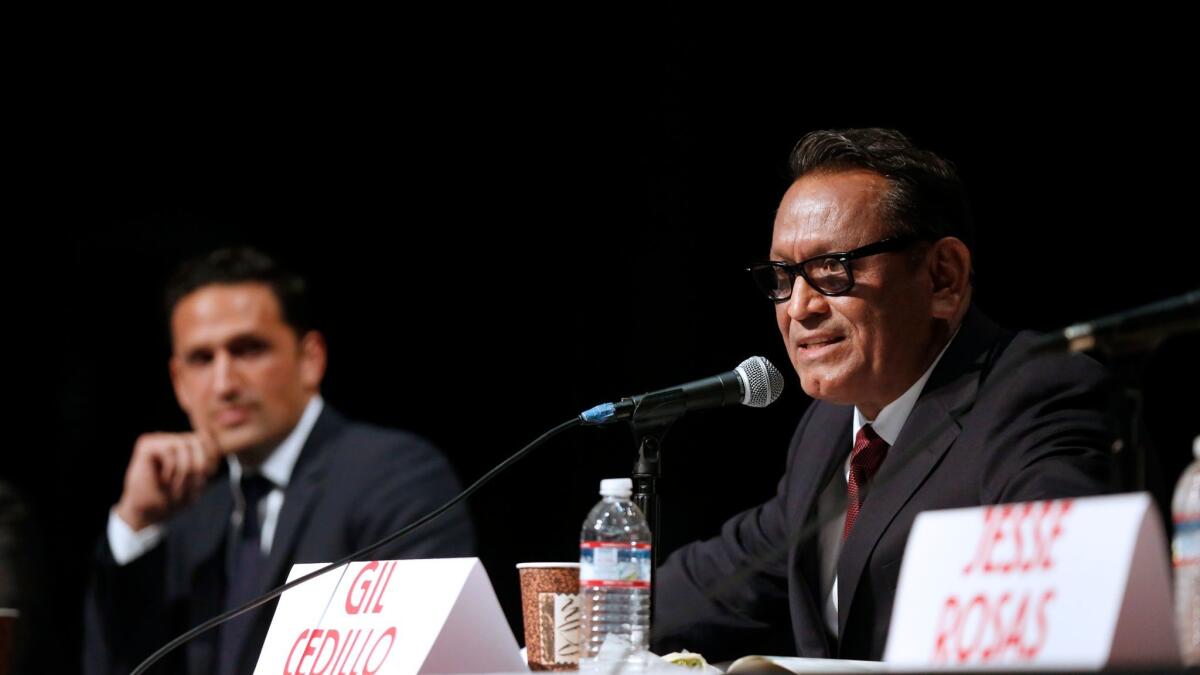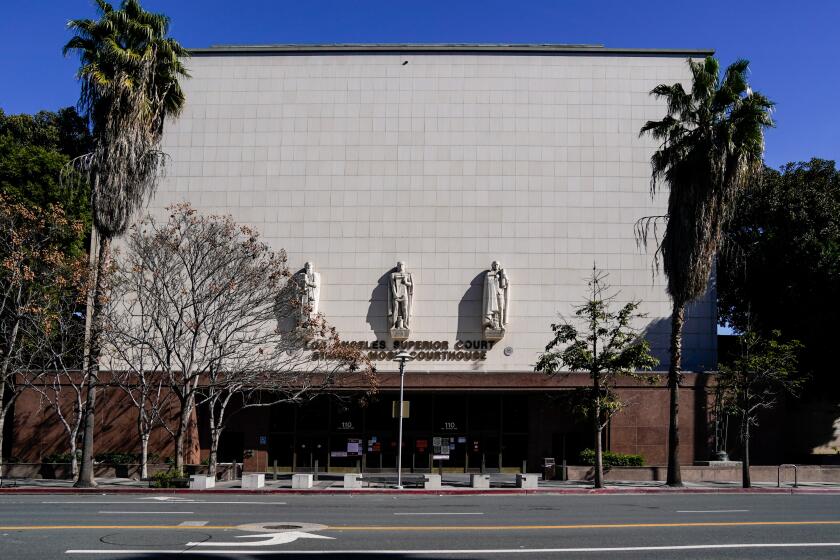Opinion: Bray-Ali vs. Cedillo runoff is a victory for a new vision of a sustainable L.A.

When the Times editorial board endorsed Joe Bray-Ali for Los Angeles City Council District 1, we described the election as a choice between competing visions of L.A.’s future.
On one side is Bray-Ali, a bike activist with dreams of a denser, smarter city with more affordable housing and fewer smog-producing cars; on the other is Councilman Gil Cedillo, a career politician who is hyper focused on building more market-rate housing and operates under the old-school rubric of the councilman as the boss of the district, rather than its servant.
In that context, the new vision scored a victory on Friday. That was when the latest ballot count from the March 7 election made it clear that an exceedingly rare thing had happened: A challenger pushed an incumbent council member into a runoff.
The final results won’t be certified until Tuesday, but there are only about 9,000 outstanding ballots out of about 900,000. That makes it all-but-certain that Bray-Ali will go head-to-head on May 16 with Cedillo for the job the next 5½ years of representing the district that stretches from Highland Park to Pico-Union.
Council incumbents have a huge advantage over challengers and in the last couple of decades they almost always have prevailed. It takes a lot of money to run a successful council race, and those with deep pockets favor those who have already been elected. Add to that a general unwillingness of voters to throw over a council member who hasn’t done anything wrong and try someone new, and it makes it nigh impossible.
Councilman Nick Pacheco was one exception. In 2003, he lost a reelection bid for Council District 14. But his opponent was a rare political celebrity: Antonio Villaraigosa, the popular former speaker of the California Legislature and future mayor of the city. Two years later Villaraigosa took out another incumbent: Mayor James Hahn.
Though Cedillo will have an advantage over Bray-Ali in the May 16 election, he would be wise to not brush-off the “trendy, hippy, hipster” (his words) constituents in the northeast part of the city who are not happy about what many believe is an unresponsive council representative. Indeed, Bray-Ali may never have launched his campaign if Cedillo hadn’t stymied efforts to build bike lanes in Highland Park. That Bray-Ali got 38% of the vote in the primary race signals deep discontent in the district.
Cedillo was a champion for immigrants during his time in the state Legislature, particularly those who are undocumented, and that good will surely counted for a lot in this heavily immigrant district. But how long can he coast on that?
Like so much of the city’s core, Council District 1 has been changing rapidly in recent years — in part because of the influx of market-rate housing Cedillo embraces. That means his district is whiter, wealthier and less likely to consider his work on behalf of immigrants as a reason to vote for him.
Follow me @marielgarzaLAT
More to Read
A cure for the common opinion
Get thought-provoking perspectives with our weekly newsletter.
You may occasionally receive promotional content from the Los Angeles Times.







